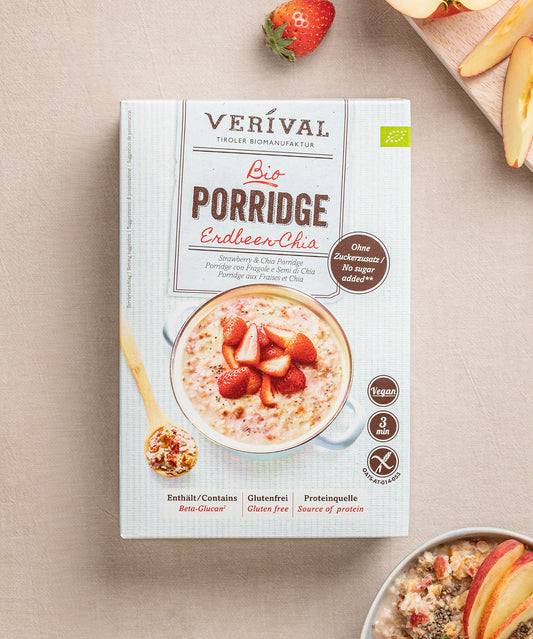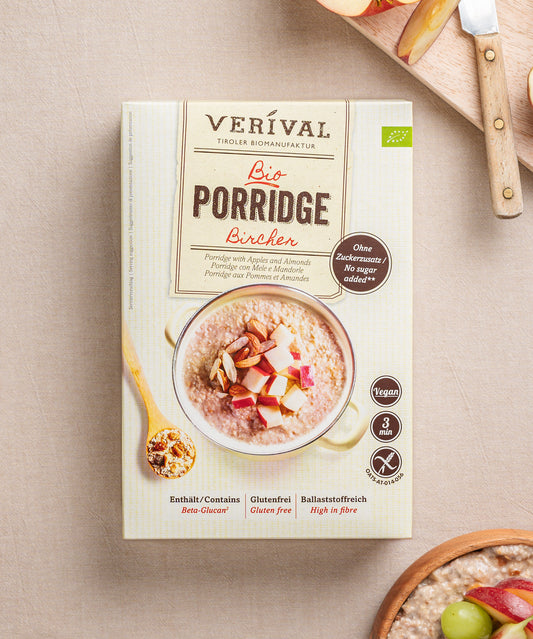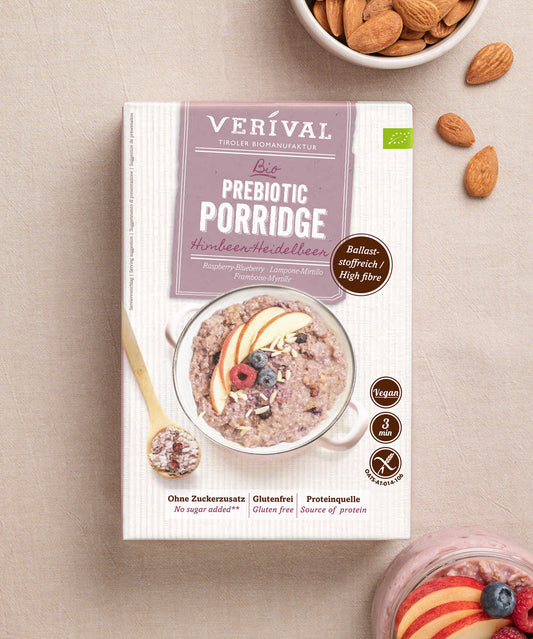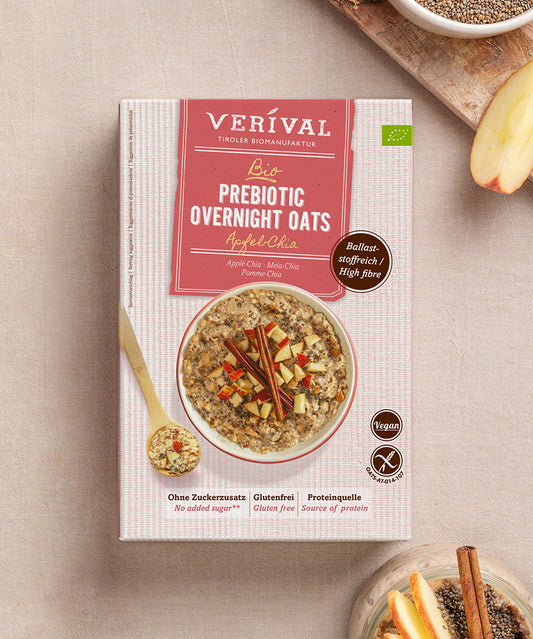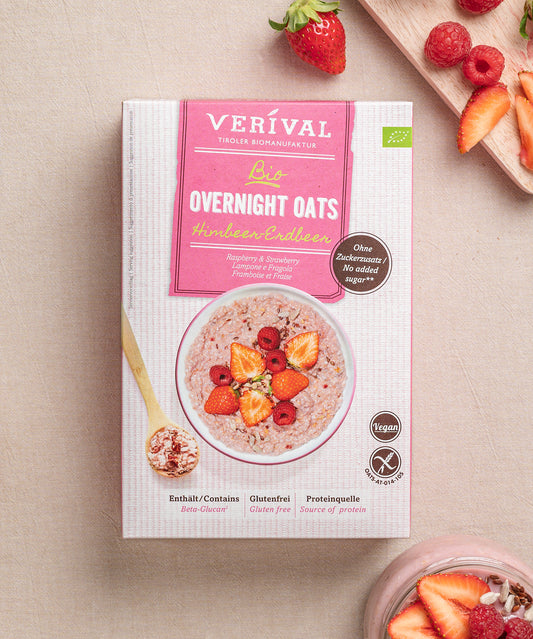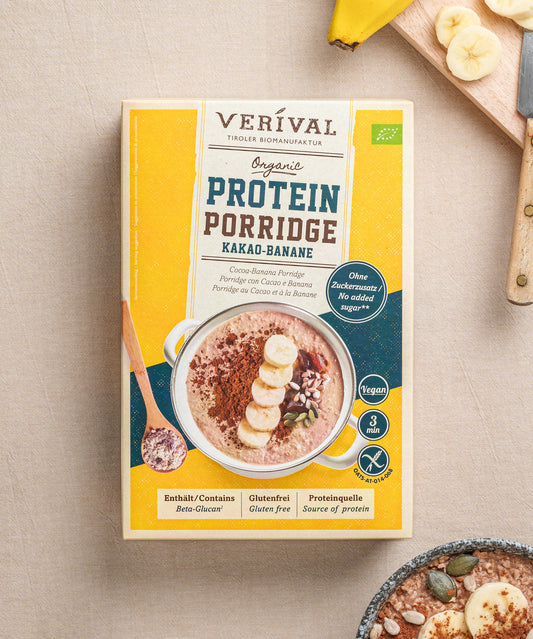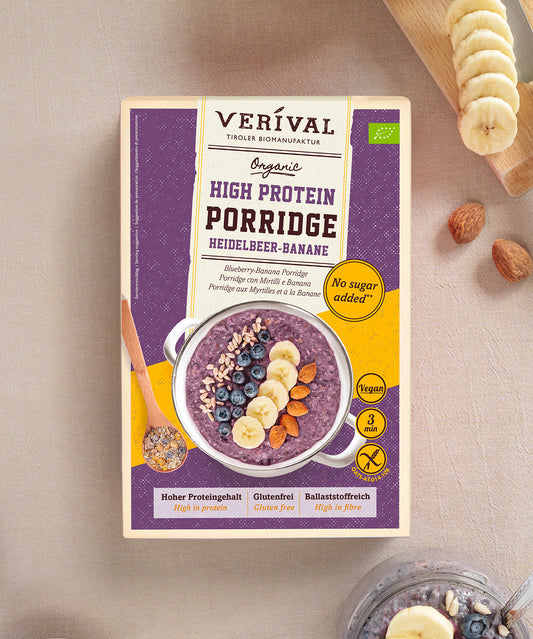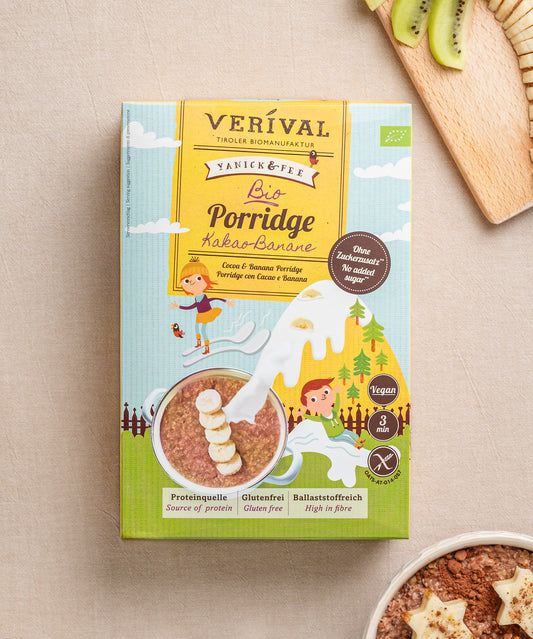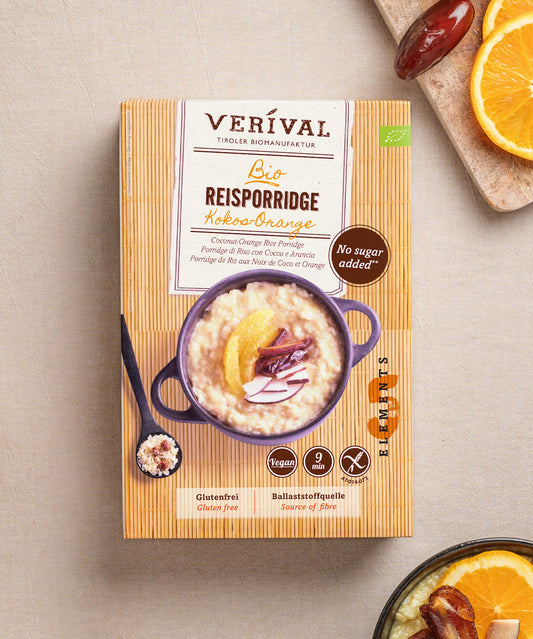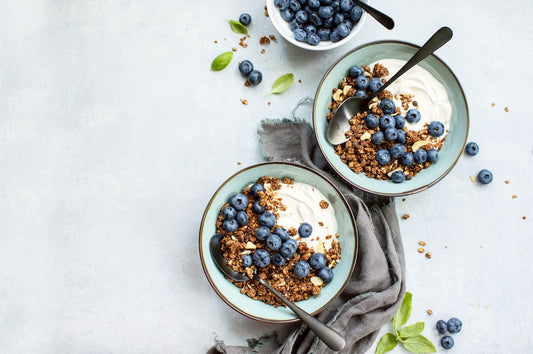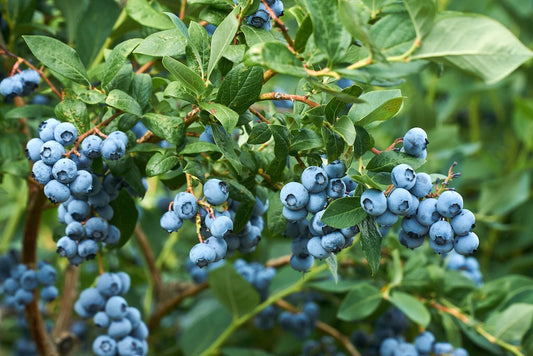Dietary fiber is a non-digestible food component found in plant-based foods. Unlike other nutrients, dietary fiber is not absorbed by the body but passes through the digestive tract almost unchanged. Although they do not provide any nutrients, they play a crucial role in health.
In this blog post, we will look at the definition of dietary fiber, their different types, and the numerous health benefits. We will also provide practical tips on how you can incorporate more fiber into your diet.
Fiber-rich diet – find out more!
What are dietary fibers?
Dietary fibers are indigestible components of food that are found mainly in plant-based foods. They are divided into two types: soluble and insoluble fiber. Soluble fiber swells in the intestines and can slow digestion. They also help lower cholesterol and stabilize blood sugar levels. Insoluble fiber, on the other hand, increases the volume of stool and speeds up its passage through the intestines, which helps prevent constipation.
Both types of fiber play an important role in our diet and are essential for our health.
Types of fiber
There are different types of dietary fiber, including soluble fiber, insoluble fiber, and resistant starch. Each type has its own specific properties and health benefits.
Soluble fiber
Soluble fiber is an important component of a healthy diet. In this chapter, we will look at the definition of soluble fiber, its functions and benefits, and the sources in which it can be found.
What is soluble fiber? Soluble fiber is fiber that dissolves in water to form a gel-like substance. It breaks down slowly in the gut and has a variety of functions in the body.
Functions and benefits of soluble fiber: Soluble dietary fibers have numerous positive health effects. They help to lower cholesterol levels by reducing the absorption of dietary cholesterol. This can reduce the risk of cardiovascular disease. In addition, they help to stabilize blood sugar levels and can thus help prevent diabetes and control blood sugar levels. Another benefit of soluble fiber is that it contributes to healthy gut flora by feeding the beneficial bacteria in the gut.
Foods such as oats, barley, legumes, apples, berries, and carrots are high in soluble fiber. By incorporating these foods into our diet, we can reap the many benefits of soluble fiber.
Insoluble fiber
Insoluble fiber is another important component of a balanced diet. In this chapter, we will look at the definition of insoluble fiber, its functions and benefits, and the sources in which it can be found.
What is insoluble fiber? Insoluble fiber is fiber that does not dissolve in water. Unlike soluble fiber, it retains its structure and consistency in the digestive tract.
Insoluble fiber plays an important role in promoting healthy digestion. It increases stool volume and promotes regular bowel movements, which can help prevent constipation. In addition, it can also help reduce the risk of bowel cancer by shortening the transit time of intestinal contents.
Foods such as whole grains, wheat bran, nuts, seeds, and many vegetables are rich in insoluble fiber. By incorporating these foods into our diet, we can increase our intake of insoluble fiber and benefit from its positive effects.
Resistant starch
Resistant starch is a special form of starch that is not completely broken down in the digestive tract and is therefore more resistant to enzymatic digestion. In this chapter, we will look at the definition of resistant starch, its functions and benefits, and the sources in which it can be found.
What is resistant starch? Resistant starch is a form of starch that, due to its physical or chemical properties, is not completely broken down by enzymes in the digestive tract. Unlike other starches, it passes through the small intestine unchanged and into the large intestine.
Resistant starch has several important functions in the body. It serves as a prebiotic and promotes the growth of healthy intestinal bacteria. In addition, it helps regulate blood sugar levels and can reduce the need for insulin after meals. Resistant starch can also help delay the absorption of nutrients, leading to a longer feeling of satiety and thus helping with weight management.
Good sources of resistant starch include green bananas, boiled and cooled potatoes, legumes, and whole grains such as oats. These foods contain a natural form of resistant starch that our bodies cannot fully digest.
Health benefits and importance of dietary fiber
Dietary fiber offers a wide range of health benefits. It supports digestive health, aids in weight management, promotes cardiovascular health and contributes to blood sugar control. Incorporating it into your diet is therefore crucial for your well-being and health.
Digestive health with enough fiber
The effects of fiber on digestion are extremely important for our overall health. In this chapter, we will look at the influence of fiber on digestion, preventing constipation and diarrhea, and supporting gut health.
Dietary fiber plays a crucial role in promoting healthy digestion. It increases stool volume and improves intestinal motility, leading to regular and efficient defecation.
Dietary fiber is particularly helpful in preventing constipation. It increases water absorption in the intestines and increases stool volume, resulting in softer stools and easier passage. At the same time, dietary fiber can also help with diarrhea by binding excess water and regulating stool consistency.
Dietary fiber serves as food for the healthy intestinal bacteria and thus promotes the growth of a healthy intestinal flora. A balanced intestinal flora is crucial for optimal digestion and maintaining strong immune function.
With fiber to your dream weight
Dietary fiber plays an important role in weight management and can help us to control our weight. In this chapter, we will look at how fiber can help with weight management by creating a long-lasting feeling of satiety, reducing the feeling of hunger and promoting weight loss.
One of the properties of dietary fiber is that it creates a long-lasting feeling of satiety. By increasing the volume in the stomach and intestines, it helps us feel fuller for longer and less inclined to snack or eat large amounts.
Dietary fiber takes longer to digest and break down in the body. This helps to stabilize blood sugar levels, avoiding the sudden spikes and drops that can trigger cravings. This leads to a long-term reduction in hunger.
High-fiber foods tend to have fewer calories compared to low-nutrient, low-fiber foods. So by eating high-fiber foods, we can consume more volume and nutrients without consuming a large number of calories. This supports effective weight loss.
Regulating the heart and circulation with fiber
Fiber has been shown to have a positive impact on the cardiovascular system and can help reduce the risk of heart disease. In this chapter, we will look at how fiber supports the cardiovascular system by lowering cholesterol and improving overall heart health.
Dietary fiber, especially soluble fiber, plays an important role in lowering cholesterol. It binds to cholesterol in the intestines and promotes its excretion, which leads to a reduction in LDL cholesterol, also known as “bad” cholesterol.
By lowering LDL cholesterol levels, dietary fiber can reduce the risk of atherosclerosis and coronary heart disease. They help keep arteries free of plaque buildup, thus promoting good blood flow to the heart muscle.
By lowering cholesterol and keeping arteries healthy, fiber helps reduce the risk of heart disease. A high-fiber diet is associated with a lower risk of heart attack, stroke, and other cardiovascular disease.
Blood sugar control
Dietary fiber plays an important role in blood sugar control and can help prevent the risk of diabetes. In this chapter, we will look at the role of fiber in blood sugar control, how it helps prevent diabetes and stabilizes blood sugar levels.
Dietary fiber slows the absorption of glucose in the digestive tract, thus helping to slow the rise in blood sugar levels after a meal. It promotes a slower and more stable release of glucose into the bloodstream, resulting in more even blood sugar levels.
Dietary fiber can reduce the risk of type 2 diabetes because it can help keep blood sugar levels stable and improve insulin sensitivity. Eating a diet high in fiber, especially by consuming whole grains, legumes, vegetables, and fruits, can help reduce the risk of developing diabetes.
By stabilizing blood sugar levels, fiber helps to prevent energy crashes and sudden blood sugar fluctuations. This is especially important for people with diabetes, who need controlled carbohydrate intake to keep their blood sugar levels stable.
How to incorporate more fiber into your diet
Increasing the amount of fiber in our diet is easier than you might think. In this chapter, we will discuss practical tips for increasing your fiber intake, introduce fiber-rich foods, and present some fiber-rich recipes.
Here are some practical tips for increasing your fiber intake. Start slowly and gradually increase the amount of fiber in your diet to avoid digestive discomfort. Incorporate high-fiber foods into every meal and snack. Also, make sure you drink enough fluids, as fiber binds water.
There are many high-fiber foods that can easily be incorporated into your diet. These include whole grains such as oatmeal, whole wheat bread and pasta, legumes such as beans and lentils, fruits and vegetables (especially berries, apples, broccoli, and carrots), and nuts and seeds.
By incorporating high-fiber foods into our diet and experimenting with recipes creatively, we can increase our fiber intake. This helps to improve digestion, maintain a healthy weight, and promote optimal health.
It is important to remember that a balanced diet consists of various nutrients. Fiber should be part of a healthy diet that also includes proteins, healthy fats, vitamins and minerals.
Here are a few breakfast recipe ideas to help you get your morning off to a great start.
Basic recipe: Prebiotic porridge
Ingredients
- 50 g Verival Prebiotic Porridge
- 120 ml hot water or hot milk
- Toppings of your choice, such as raspberries or blueberries.
Preparation
- Put the prebiotic porridge in a bowl.
- Pour the hot milk or hot water over the porridge.
- Leave your porridge to stand for 3 minutes and stir it.
- Done!
Discover more high-fiber recipes!
The perfect breakfast to increase your fiber intake
At Verival, we have made it our mission to make your mornings as perfect as possible. Whether you are an athlete or just want to take care of your health, we have something for everyone in our range.
High-fiber breakfast from Verival
It is really important to us that you have absolute control over your breakfast. If you want a breakfast with lots of fiber, you've come to the right place. Whether it's muesli, porridge or our crunchy, there are many ways to incorporate fiber into your diet. Ideally, you should do it at breakfast time!
Discover all our Verival products with fiber now:
Discover the full range of high-fiber Verival products here.
Conclusion: What are dietary fibres?
Dietary fibres play an important role in our health. They aid digestion, promote satiety, help with weight management, contribute to cardiovascular health and control blood sugar levels. There are different types of dietary fibres, including soluble fibres, insoluble fibres and resistant starch, each offering their own benefits.
We can meet our fiber needs by eating a high-fiber diet that includes whole grains, legumes, fruits, vegetables, nuts, and seeds. Incorporating high-fiber foods into our meals and snacks is the key to reaping the health benefits of fiber.
Frequently asked questions
Examples of dietary fiber?
Foods rich in dietary fiber are diverse and can be used in various meals and snacks. Examples include whole grains, legumes, fruits, vegetables, nuts, and seeds. Eating these foods can increase dietary fiber intake, which has a positive effect on health.
What are foods rich in dietary fiber?
High-fiber foods include whole grains, legumes, fruits, vegetables, nuts, and seeds. They are important sources of fiber in the diet. Regular consumption of these foods helps maintain healthy digestion and overall health.
Where is the most fiber found?
High-fiber foods, such as legumes, whole grains, and fruits, are good sources of fiber. Vegetables like broccoli and carrots, as well as nuts and seeds, are also high in fiber. Eating a balanced diet of these foods can help meet your fiber needs and support good health.
What are the purposes of fiber?
Dietary fiber performs important functions in our body, such as promoting digestion and preventing constipation. They also help control blood sugar levels and support cardiovascular health. A high-fiber diet is crucial to reap these health benefits.
How can you build up your intestinal flora?
To build up your gut flora, you should eat a high-fiber diet rich in vegetables, fruits and whole grains. Supplement your diet with probiotic foods such as yogurt or probiotic supplements. Avoid excessive use of antibiotics and find ways to reduce stress to promote the health of your gut flora.
Can you rebuild a gut flora?
Yes, a disrupted intestinal flora can be rebuilt, but it takes time and patience. A targeted diet with high-fiber foods and probiotic foods can promote the growth of healthy intestinal bacteria. In addition, excessive use of antibiotics should be avoided and stress reduced in order to restore the intestinal flora.
Why is fiber so healthy?
Dietary fiber is healthy because it aids digestion, gives you a feeling of satiety and helps with weight management. It also helps control blood sugar, lowers cholesterol, supports gut health and has anti-inflammatory properties. A high-fiber diet that includes fruits, vegetables, whole grains and legumes offers these health benefits.


